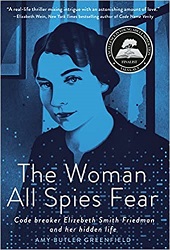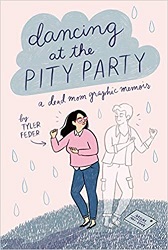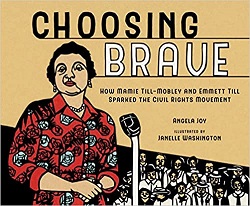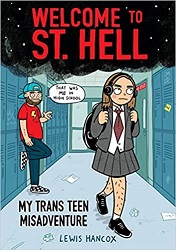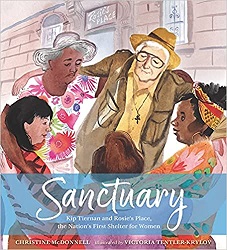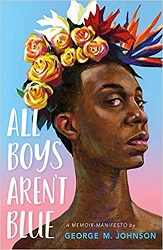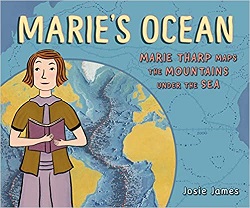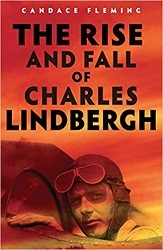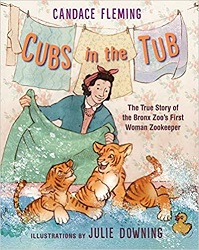Review of The Woman All Spies Fear, by Amy Butler Greenfield
Code Breaker Elizebeth Smith Friedman and Her Hidden Life
by Amy Butler Greenfield
Random House Studio, 2021. 328 pages.
Review written February 26, 2023, from a library book
2022 YALSA Excellence in Nonfiction Award Finalist
2022 Cybils Award Winner – High School Nonfiction
Starred Review
Okay, I meant to read this book once it was named as a Finalist for the YALSA Excellence in Nonfiction Award last year. When this year it won the Cybils Award for High School Nonfiction, that intention took on new urgency. On top of that, a book for younger kids about Elizebeth Friedman, Code Breaker, Spy Hunter, by Laurie Wallmark, was a 2021 Sonderbooks Stand-out and a 2023 Mathical Book Prize Honor Book. And I watched a PBS documentary about her online, “The Codebreaker.” This book for older readers gives many more details about her fascinating life.
Elizebeth Smith was born in 1892 and got started in code breaking by working for an eccentric millionaire, looking for hidden codes from Francis Bacon in the works of Shakespeare. That search came to nothing, but it was there that Elizebeth met her husband-to-be William Friedman, who turned out to be an equally brilliant code breaker.
Elizebeth ended up using her skills for the government to unravel and create coded messages during World War I, during Prohibition against rum runners, and during World War II and beyond. She and her husband helped found cryptanalysis as a science, and trained the nation’s corps of codebreakers.
Her career spanned world wars that happened before computers were used to solve codes, and she brilliantly could spot and break multi-layered cyphers of many different types and in many different languages, using paper and pencil.
This book is packed with amazing stories of her skills, with plenty of personal details about what was going on in her life. Her husband ended up battling mental illness, but Elizebeth carried on, a working mother when that wasn’t the norm. It tells about interagency rivalry as well as national security secrecy that kept her from getting credit for her amazing work.
I enjoyed the frequent “Code Breaks” in the book that looked in more detail at a specific kind of coded message. Those gave me new appreciation for Elizebeth’s intricate level of skill, showing how messages would get coded in multi-step processes — and she would still break them. (Though I was able to solve the simple cypher the author put in the Acknowledgements.)
This book tells a wonderful story of a brilliant woman who, in a time when women’s brains weren’t valued, used hers to defeat bad guys.
amybutlergreenfield.com
GetUnderlined.com
Find this review on Sonderbooks at: www.sonderbooks.com/Teen_Nonfiction/woman_all_spies_fear.html
Disclosure: I am an Amazon Affiliate, and will earn a small percentage if you order a book on Amazon after clicking through from my site.
Disclaimer: I am a professional librarian, but the views expressed are solely my own, and in no way represent the official views of my employer or of any committee or group of which I am part.
What did you think of this book?
